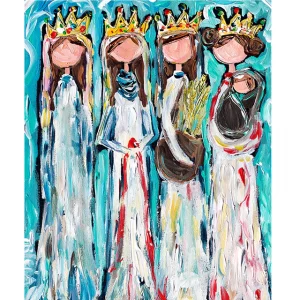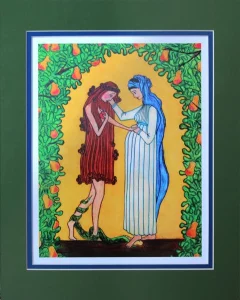
Photo by Robert Thiemann on Unsplash
Naming evil but choosing love
December 12, 2022
Advent is a season of tension. It demands that we look back, so that we can look forward. We look back to the promise-filled stories of the Old Testament, particularly the psalmists and the prophets. These writers remind us that our world is often shaped by things that leave us wounded. Advent takes time to name the violence, dislocation, and pain of our world. It takes seriously the act of naming the causes and effects of darkness. Advent invites us to share our anger, fear, desperation, and resignation at the feet of God.
Advent and the promise-filled stories of the prophets and psalmists summon us to hope in God. They call us to place our trust in a God who will bring peace. The Scriptures of Advent remind us of all that God has done in the past so that we can keep moving forward with joyful expectation that God is with us. Ultimately the prophets and psalmists teach us to lovingly demand that God rescue and redeem his people again.
Advent invites us into an annual tension-packed and frequently confusing tapestry of extremes. Waiting for light to overcome darkness. Being honest about our despair while placing our hope in the Trinity. Admitting our fears while searching for peace. Experiencing Christ-centered joy amid our griefs. Naming evil but choosing love.
Advent uses the symbolism of progressively welcoming one candle, one week at a time, so that slowly over the course of a month we see it gradually overcome the darkness. The light slowly uncovers and overtakes the gritty realities of life. This gradual illumination helps us be truthful with God and ourselves. Things are not always as they should or could be. But the stories and the candles call us to remember how God did something about it in the past through Jesus and how we can continue to demand that God continue to do something about it going forward.
Advent invites us into an annual tension-packed and frequently confusing tapestry of extremes. Waiting for light to overcome darkness. Being honest about our despair while placing our hope in the Trinity. Admitting our fears while searching for peace. Experiencing Christ-centered joy amid our griefs. Naming evil but choosing love.
I have two paintings in my office that remind me of the power and importance of Advent and the Biblical narrative of salvation and hope.

The Four by Tricia Robinson
The first is called The Four by Tricia Robinson. The acrylic painting captures the four women—Tamar, Rahab, Ruth, and Bathsheba—mentioned in Matthew’s genealogy of Jesus and places them beautifully side by side. Each is wearing a crown. Each woman’s story is marked by isolation, being taken advantage of by power, abused, ethnically profiled, and overlooked. They each received a form of justice. Their stories are not sweet, kind family Christmas stories for kids around fireplaces, but gritty and raw narratives reserved for courageous adult conversations around stiff drinks after the kids go to bed. They are the bloodline and family narrative of Jesus. Their story is Jesus’ story. Their stories are the stories of salvation and redemption. The stories that reflect the tension tapestry of Advent.

Mary and Eve by The Sisters of Mississippi Abbey
The second is called simply Mary and Eve and was created by a nun in the Our Lady of the Mississippi Abbey in Iowa. It is humbly described as a drawing, but it is so much more. The outer frame is meant to recall the tree of good and evil. Eve is depicted holding fruit from the tree with a snake curled menacingly around her leg. A pregnant Mary with passion in her eyes lovingly lifts Eve’s chin while stomping on the head of the snake. Both women gaze in wonder at the baby within Mary and while touching her swollen abdomen.
Mary and Eve is accompanied by this wonderful poem.
My mother, my daughter, Life-giving Eve,
Do not be ashamed, do not grieve,
The former things have passed away,
Our God has brought us to a New Day.
See, I am with Child.
Through whom all will be reconciled.
O Eve My Sister, my friend,
We will rejoice together
Forever
Live without end.
God has brought us to a New Day. We may officially roll over into a new calendar day at midnight, but you can’t see or feel that moment, so sometimes it is hard to know when one day begins and another ends. However, we all know a new day has truly come every time the sun faithfully pushes its way up and beyond the eastern horizon. That is the hope of Advent.
We place all our Christian hope on the coming, death, resurrection, ascension, and return of Jesus, through whom all will be reconciled. Advent invites us to rejoice together in the redemptive light of Jesus and to place our hope on the future New Heaven and New Earth.
In the meantime, we wait.
We confess darkness and name evil.
We burn candles and rejoice in the light of Christ our Emmanuel, God with us.
Rev. Dr. Greg Mamula is transitional executive minister, American Baptist Churches of Nebraska. He is author of Table Life: An Invitation to Everyday Discipleship, published by Judson Press. Visit table-life.org to learn more about his ministry and writing projects.
The views expressed are those of the author and not necessarily those of American Baptist Home Mission Societies.


